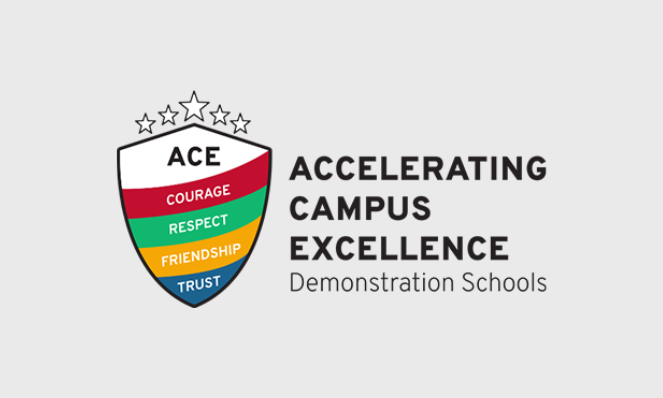
The Hidden Resource: How Time Allocation Impacts Reading Instruction
Discussions of schools being under-resourced in terms of funds, supplies, and staffing are everywhere, but any educator can tell you that time is the hidden all-important resource that there never seems to be quite enough of.
How schools choose to allocate this most precious of resources can not only illustrate their priorities but also provide a clue as to how likely they are to meet their goals.
What do I mean by that?
Given that you’re reading this, chances are one of your priorities is making sure that all students are proficient readers by the time they enter 3rd grade. To progress toward that goal, it’s probably evident that schools need to allocate a significant portion of classroom time to teaching reading—but that’s just the tip of the iceberg. Effective classroom instruction is built on a myriad of factors below the surface, each of which also requires dedicated time to do well. To make the most of classroom time, teachers need to spend significant time on their own professional learning—and leaders need time to design and deliver professional learning that meets teachers’ real-time needs.
In our experience, we think these three layers—classroom instruction, teacher professional learning, and leader preparation—are the top priorities for time allocation to support effective structures and strategies in early literacy.
1) Find 120 minutes daily to devote to high-quality early literacy instruction grounded in the science of reading.
Don’t freak out—we know that two full hours every day can seem like an impossibly big chunk of time to dedicate to a single subject given everything else educators have to do between 8:00 a.m. and 3:00 p.m. Here’s why we recommend it: The 90-minute literacy block has long been the gold standard of reading instruction in US schools, and “evidence substantiates the use of the block as a best practice in literacy instruction and meets the ESSA requirements for evidence that demonstrates a strong rationale” (Underwood, 2018). We recommend 120 as a way to keep this 90-minute block for whole-class instructional activities and add an additional 30 minutes dedicated to small-group instruction in which students receive differentiated instruction targeted on skills they are still developing.
In our experience, this additional, focused 30 minutes turbo charges student learning—it provides a guardrail so that students don’t fall behind just because they need a little extra help with a particular skill. Crucially, that also means that teachers are able to make better use of their 90-minute block because they can move the whole class along at a more consistent rate.
Now, at this point you might be thinking, “I can get behind that rationale, but, gee whiz, that doesn’t mean I can find 120 minutes in my schedule.” It’s true, reorganizing time is not a simple task, but we’ve got some resources that can help facilitate the process. Try a time inventory protocol to help you home in on where there might be leeway in how you’re spending your time now and think through how you can reallocate those minutes. Check out this example of how a Tennessee school district repurposed 60 minutes they had been spending on daily intervention for a focused foundational skills block.
2) Allocate time for teachers to engage in professional learning focused on early literacy instruction.
Allotting enough time for classroom and small-group instruction is a critical first step, but it’s just that: a first step. Allocated minutes—in and of themselves—aren’t enough to catalyze meaningful improvement in student outcomes:
“filling up a day’s schedule and curating a powerful set of learning experiences are not the same thing. Organize your instructional time around what you are trying to accomplish, rather than on certain activities. If you have set aside time to teach kids to bring their prior knowledge to bear on the text that they are reading, then your minutes of reading comprehension this week should be focused on that….When it comes to time, keep eyes on the learning prize, not the activity that might be used to address it” (Shanahan, 2023).
The hitch is, developing a month’s, a week’s, a day’s worth of quality instruction that is responsive to where a particular group of individual students is right now takes knowledge, skill, and—you guessed it—time. Teachers need regular time in PLCs to develop their understanding of curriculum, review student data, internalize and prepare for upcoming units and lessons, talk through spots where they anticipate students may struggle, and debrief what went well and what could have gone better. This time is crucial for educators’ ability to make the most of the minutes they have with students in the classroom. The time inventory linked above can be a useful tool to find additional minutes for teacher PL.
It’s also crucial to ensure that teams make the best use of the professional learning time they already have allocated. Check out our Professional Learning Conditions and Practices for additional resources and guidance on how you can make the most of collaborative planning in your school or district.
3) Allocate time for leaders supporting early literacy structures and strategies to engage in their own professional learning and prepare to lead ongoing professional learning for teachers.
This is the category of time that’s most often overlooked, but it’s just as essential as dedicated learning time for students and teachers. If we agree that teachers need routine time to engage in meaningful professional learning experiences, then we need to ensure that the people leading professional learning in a school or system (i.e., instructional leaders) are prepared to make those experiences meaningful.
That means that leaders need time to dive into their school’s curriculum, so they have a deep understanding of the materials their teachers and students are engaging with. Without this understanding, they cannot effectively lead collaborative planning, data analysis, or debriefs of classroom experiences predicated on the materials in use.
In short, in order to receive high-quality early literacy instruction, students need their teachers to receive meaningful professional learning; in order to receive meaningful professional learning, teachers need their leaders to deeply understand early literacy content and materials; in order to deeply understand early literacy content and materials; leaders need regular, substantial, dedicated time to focus on their own learning. (Anyone else thinking about If You Give a Mouse a Cookie?)
In addition to spending time diving deeply into the school’s curriculum and aligning with other leaders tasked with supporting early literacy throughout the school or system, leaders need scheduled time to routinely observe classrooms and provide actionable feedback to teachers about their instruction. Here’s an example of what a leader’s observation and feedback schedule might look like. It may also be useful to check out our resources on effective observation and feedback, including guidance on creating and maintaining effective instructional rounds and ongoing feedback cycles.
We recommend using an observation tool like this one, which highlights key indicators of high-quality instruction. Using a tool like this provides a common framework for both leaders and teachers about what high-quality instruction looks like in the classroom. Such a shared framework not only deepens teacher capacity but provides a common language for leaders and teachers in coaching conversations and day-to-day meetings, which helps scale a vision of instruction throughout an entire school or district by ensuring that educators are all working toward the same criteria for success. It also gives teachers more insight into what to expect when their classrooms are observed and enables leaders to aggregate data and note trends at the level of a grade, grade band, school, or entire district as well as track changes through time.
Time is a finite resource in schools; finding enough of it is, has always been, and likely will always be seemingly impossible. But, it is almost always possible to change how we’re using our time for the better. There are tools and actions schools and districts can use and take to reallocate time to their highest priorities. And what could be of more importance than developing literacy skills in our youngest students—skills we know they will need to be successful, not just in the grades to come, but throughout their lives?
Still, we know it’s not easy. That’s why we outlined a step-by-step Early Literacy Playbook that details specific ways leaders can maximize their time to build and/or support their early literacy system. Get started today!


